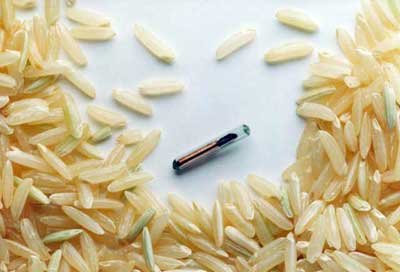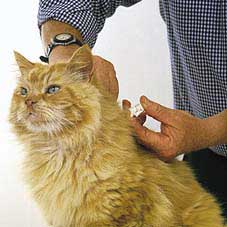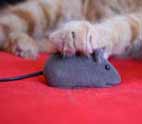Microchipping Cats
Can Help Ensure Their Safe Return
Microchipping cats is fast becoming the best way to protect your cat from becoming lost.
If only more cat owners would carry out this fairly inexpensive procedure, I would not be constantly seeing worried owners posting on missing pet forums.
It really does break my heart when I read how their cat has gone missing and they have no form of identification on them.
Why Is Micro-chipping Cats Necessary?
You may think that your indoor cat does not need to be microchipped. Well youll be amazed at just how many cats do at some point manage to get out. A door left ajar by a guest or a window left just that little bit too wide, thats all it would take.
Your cats first instinct will be to explore their new world and this might mean that they will wander quite far at first.
So what happens if they do not have any ID? Well if your lucky, the cat will find their way home by themselves. But in the mean time you will be worried sick.

If your not lucky, your cat may end up wandering around as a feral cat until they are picked up by a cat shelter (hopefully).
Now if the cat were micro-chipped, you would have the safe knowledge that when someone finds them the local vet can identify them, and if you have registered your details correctly you will be contacted to come and pick up your pet.
I would also recommend that your cat also wears a collar with an id tag that along with your telephone number which also indicates that they are microchipped.
This will alert people and vets, and enable them to be returned to you if their are no scanner available locally.
A lot of animal shelters now have a policy of microchipping cats that pass through their doors before they are rehomed and registering them on their databases. This is yet another good reason to find a cat from an animal shelter rather than a breeder.
What Is Microchipping?

Basically, a very small computerised chip about the size of a grain of rice is inserted under the cats skin. The chip is programmed with a special code, which is unique to that cat. The code is then logged onto a database that then lists the cats details i.e. name, age, address and telephone number etc, which can be read with a special scanner.
A few years ago there were problems with incompatibility between different types of microchips being used, with some scanners not being able to read some chips. However this is no longer an issue as the companies involved are now using the same technology and so all scanners (as long as the clinic is using an up to date scanner) should be able to read all microchips.
Does Micro-chipping Cats Hurt?
A lot of owners are worried about the process hurting their cats but it is no more painful than a regular injection and the cat cannot feel the chip once it is inserted.
It is also a very quick procedure and can often be carried out at the same time as annual vaccinations.
Little Mo was microchipped a few years ago and she didnt even wince. The vet seemed to use the scruff of the neck that mother cats use to carry their kittens with and so I think Mo thought she was just being picked up.
It was over so quickly; I even had to ask the vet if he had done it.
Is It Expensive?
As at the time of writing (2007) the cost seems to be around $40 (£20 - £30) depending on where you have it done. Generally it is in the interests of the microchip makers and the vets to keep the price low to encourage owners to carry our microchipping.
Some cat charities even hold special days or events to offer microchipping cats deals, so its always worth contacting your local cat charities and shelters to see if there are any events in your area.
Top of this Microchipping Page





